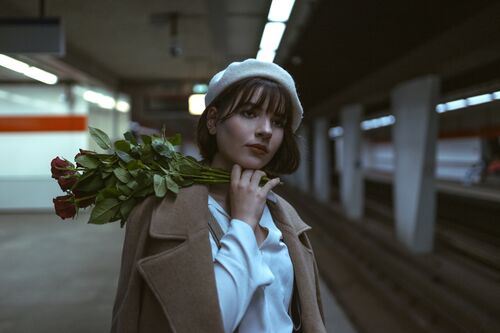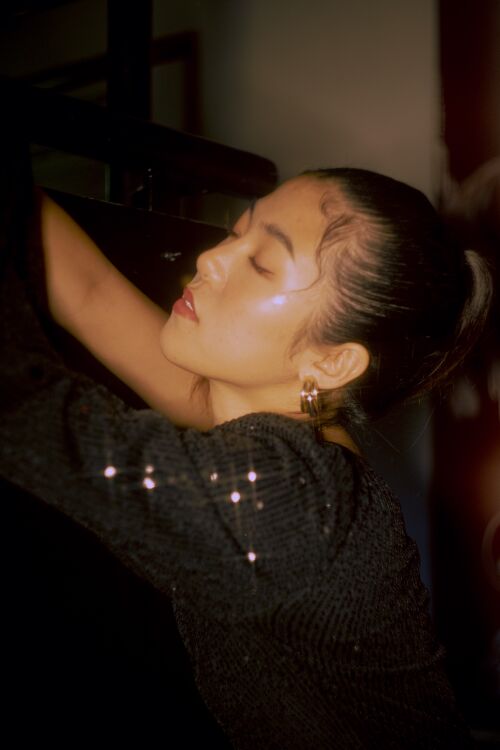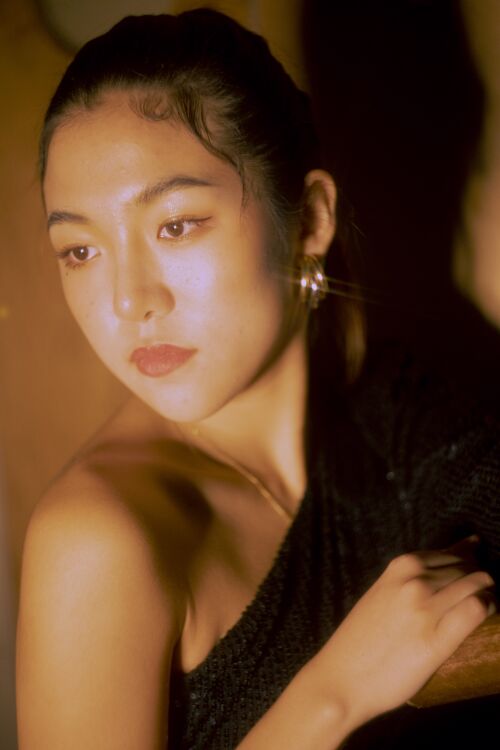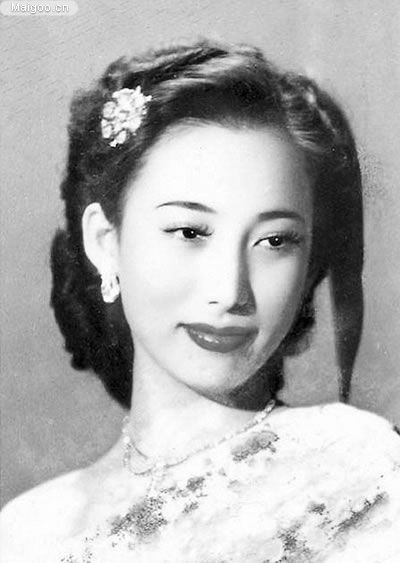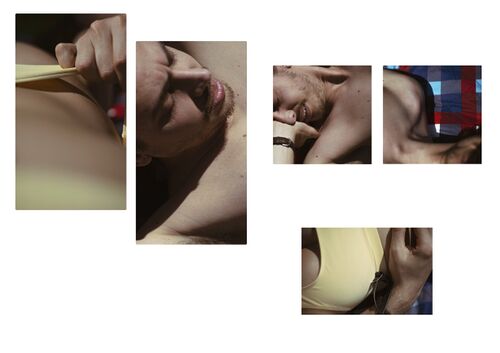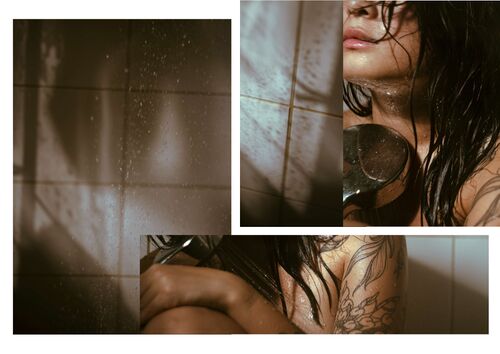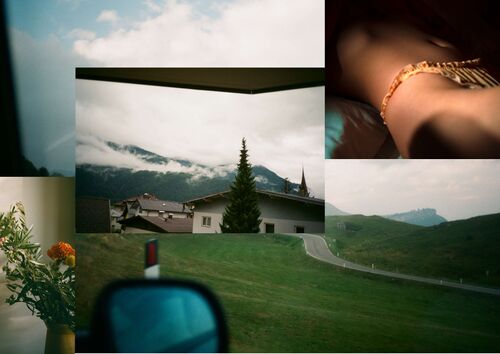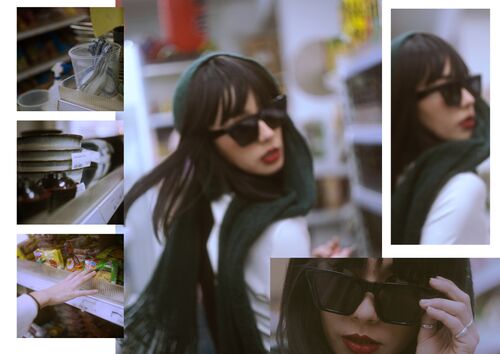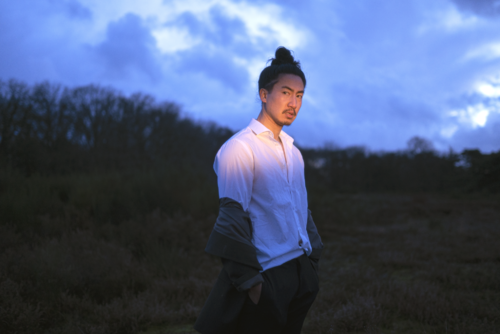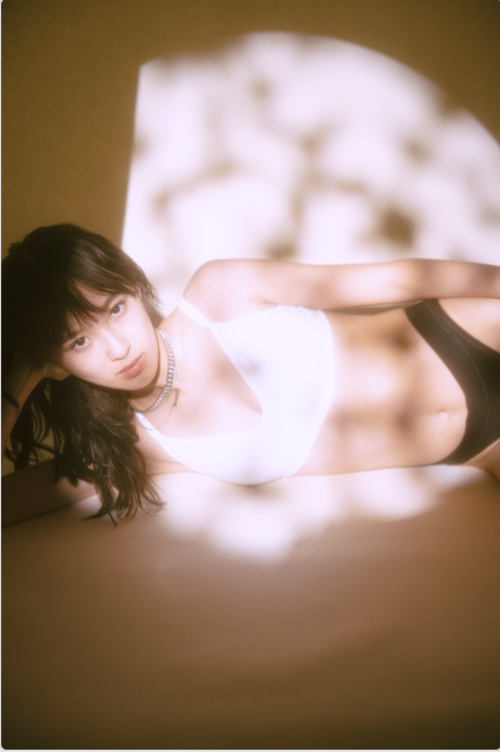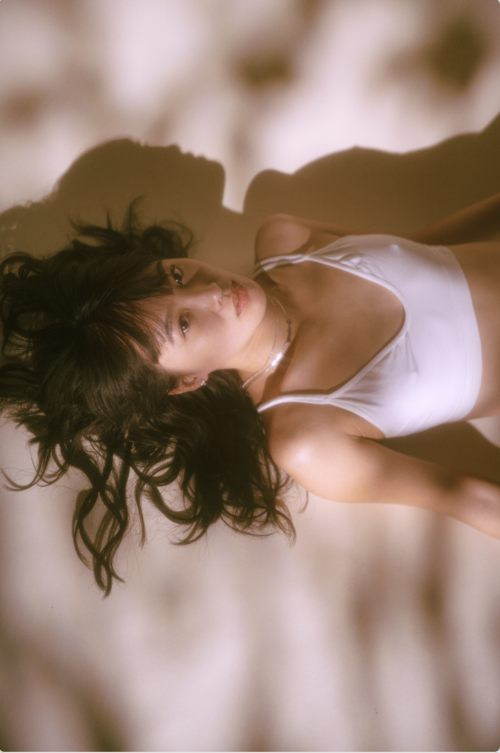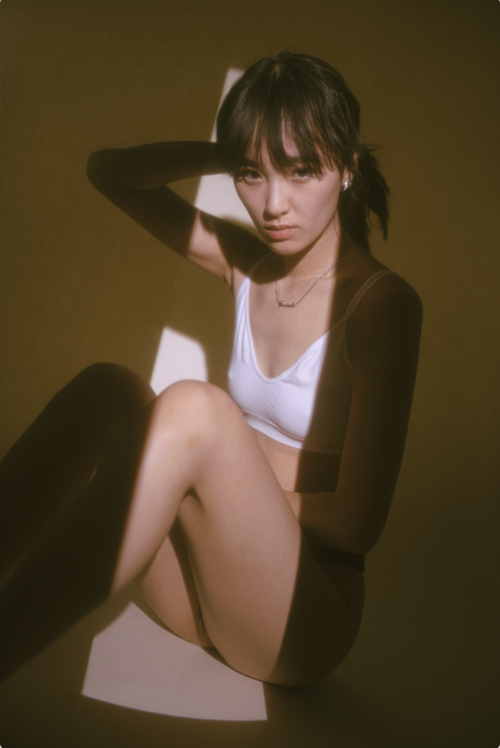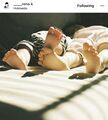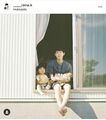MathildeNewDraft: Difference between revisions
No edit summary |
(→Intro) |
||
| (4 intermediate revisions by the same user not shown) | |||
| Line 19: | Line 19: | ||
Value the fact YOU HAVE A PRACTICE | Value the fact YOU HAVE A PRACTICE | ||
Next stage: put your photos on this wiki page and use the method describing:lighting, costume, imagined situation exclusively. | |||
Previous drafts [[MathildeThesisDraft]] << you can get earlier material from here | |||
= Intro= | |||
[[file:Earlierwork1.jpg|500px]][[file:Earlierwork2.jpg|500px]] | [[file:Earlierwork1.jpg|500px]][[file:Earlierwork2.jpg|500px]] | ||
| Line 50: | Line 47: | ||
This wasn’t supposed to have the look of a cinema still, the purpose of this photo was to make it look like an analog clubbing snapshot. | This wasn’t supposed to have the look of a cinema still, the purpose of this photo was to make it look like an analog clubbing snapshot. | ||
The model is on a night out, she is wearing a glittery dress. Her ponytail is a very polished one with the hair embellishments. It’s very much a clubbing outfit. Harsher lighting that was supposed to imitate a harsh flash from the camera itself. There’s a harsh light beam on the side of her face; almost the product of using a fast flash. The light it not supposed to be perfect, it’s supposed to capture the subject quickly and in the moment. I also used a star filter in order to place an emphasis on the glitter and because it gives the photo a more 80’s feel. I used a digital camera with the use of a helios lens. This lens doesn’t have autofocus and tones down the colours a little bit, creating a dreamier look. This use of forced manual focus, allows me feel like I’m using my own analog camera while still shooting digital; it’s kind of like I’m trying to find a shooting style that mixes these two elements of analog and digital shooting styles. The pose is very disconnected to the camera. She’s not noticing that someone is photographing her. Her eyes are closed; she is very much basking in a private feeling of euphoria. She is feeling the music or the drugs. She is either not present at all or too present. | |||
The model is on a night out, she is wearing a glittery dress. Her ponytail is a very polished one with the hair embellishments. It’s very much a clubbing outfit. | |||
Harsher lighting that was supposed to imitate a harsh flash from the camera itself. There’s a harsh light beam on the side of her face; almost the product of using a fast flash. The light it not supposed to be perfect, it’s supposed to capture the subject quickly and in the moment. I also used a star filter in order to place an emphasis on the glitter and because it gives the photo a more 80’s feel. | |||
I used a digital camera with the use of a helios lens. This lens doesn’t have autofocus and tones down the colours a little bit, creating a dreamier look. This use of forced manual focus, allows me feel like I’m using my own analog camera while still shooting digital; it’s kind of like I’m trying to find a shooting style that mixes these two elements of analog and digital shooting styles. | |||
The pose is very disconnected to the camera. She’s not noticing that someone is photographing her. Her eyes are closed; she is very much basking in a private feeling of euphoria. She is feeling the music or the drugs. She is either not present at all or too present. | |||
<br></br> | <br></br> | ||
[[file:MNCT-2021-10-22-DSC00401.jpg|500px]] | [[file:MNCT-2021-10-22-DSC00401.jpg|500px]] | ||
<br></br> | <br></br> | ||
This image has the same imaged story as the last one, however there’s more movement. The model is noticing the camera, but it feels like she’s still not entirely making contact with the camera. She has a dreamy, disconnected look in her eyes. | This image has the same imaged story as the last one, however there’s more movement. The model is noticing the camera, but it feels like she’s still not entirely making contact with the camera. She has a dreamy, disconnected look in her eyes.The focus is not entirely on her face, but a piece of arm just in front of it. This implies movement; as if she swung backward as the photographer was taking the photo. These photos, to me, are a perfect example of an “in the moment” photo, because it doesn’t feel like the model is specifically there to be photographed. The Photographer is documenting a moment. This is because the model has this disconnected look from the photographer. So while she is aware of him; it’s almost like her attention isn’t on specifically taking this photo.These images were greatly inspired by the style of the movie "In the Mood for Love" By Wong Kar wai. This film a particular colour range; a yellow-greenish, mostly warm toned aesthetic with a high contrast and yet a softness to it. I will also draw on the influence of asian analog photographers who use a similar aesthetic of this grainy, green toned, nostalgic aesthetic. With this style, I want these images to put the viewer in a particular nostalgic place. | ||
The focus is not entirely on her face, but a piece of arm just in front of it. This implies movement; as if she swung backward as the photographer was taking the photo. | |||
These photos, to me, are a perfect example of an “in the moment” photo, because it doesn’t feel like the model is specifically there to be photographed. The Photographer is documenting a moment. This is because the model has this disconnected look from the photographer. So while she is aware of him; it’s almost like her attention isn’t on specifically taking this photo. | |||
These images were greatly inspired by the style of the movie "In the Mood for Love" By Wong Kar wai. This film a particular colour range; a yellow-greenish, mostly warm toned aesthetic with a high contrast and yet a softness to it. I will also draw on the influence of asian analog photographers who use a similar aesthetic of this grainy, green toned, nostalgic aesthetic. With this style, I want these images to put the viewer in a particular nostalgic place. | |||
<br></br> | <br></br> | ||
[[file:MNCT-2021-10-22-DSC00232.jpg|500px]] [[file:VoorbeeldoudTaylor.jpeg|500px]] | [[file:MNCT-2021-10-22-DSC00232.jpg|500px]] [[file:VoorbeeldoudTaylor.jpeg|500px]] | ||
The model has statuesque pose; like a doll. It might be, in this series of photos, taken before the other two pictures were taken. It looks a little bit more like she has just arrived, she looks a lot more proper and composed compared to the other pictures. And even though she isn't looking at the camera, it seems like she is a little more aware that she is being photographed. By the doll-like and statuesque pose, I would think that she is some sort of heiress living in the 50's or 40's, an example of a portrait I would compare it to is seen on the right. I wanted to use flash-like light, to make it look like a deliberate portrait, and not so much a cinematic still, as mentioned above. | |||
These images were shot digitally and colour graded and lit to have an analogue and cinematic blend style. This promotes, to me, the best of both worlds; combining my digital shooting method with the style and nostalgia of an analog look. I want these photographs to have a feeling of being a quick snapshot while at the same time being a little too dreamy and stylised to create the feeling of it being a memory that is romanticised. | |||
My parents are from Surinam and I would refer to myself as "a fake Asian" as I am mixed Chinese-Vietnamese-Whatever and did not grow up traditionally with Asian culture. So even though Anime is very much Japanese, because I wouldn't place myself in a certain country, I would try to have this connection with anything Asia-related. I feel like growing up I kind of became ashamed of my appearance and kind of got away from accepting myself; however as I turned 25 I felt like I want to embrace what, and who I am. And therefore I have also turned my interest into almost exclusively Asian photographers, from all of Asia. Because I don't see myself in any one of those cultures specifically, I like comparing styles from different countries. And it's something I would love to explore more. | |||
| Line 97: | Line 77: | ||
imagined situation | imagined situation | ||
Thi series shows fragments and details of a moment pieced together to create a larger story. These ‘collages’ are works that show how I remember moments; in small and intimate fragments that together create the whole memory. I wanted them to have an intense and intimate feeling to it by taking details and almost vague composition in order for the audience to have to guess what is happening. In a way inviting active thought and fantasy to the work. By also incorporating the darker/moodier style of the my previous style experiment; I wanted to create a bittersweet memory that is focussed on intimacy. | |||
By using intimate and/or vague compositions, I tried to create a sense of wonder in the audience. Combining these in a couple of different ways, I wanted to see what the image would tell as a collage. By three out of four of the examples, I used myself or my boyfriend as a foundation in order to warm up to taking these intimate compositions and seeing if the work actually made the impact on me that I wanted. In the fourth image (in the supermarket) I used the Helios lens, that is only focussed manually, and shot my model in a way that conveyed movement and out of focus. A blurry memory. | By using intimate and/or vague compositions, I tried to create a sense of wonder in the audience. Combining these in a couple of different ways, I wanted to see what the image would tell as a collage. By three out of four of the examples, I used myself or my boyfriend as a foundation in order to warm up to taking these intimate compositions and seeing if the work actually made the impact on me that I wanted. In the fourth image (in the supermarket) I used the Helios lens, that is only focussed manually, and shot my model in a way that conveyed movement and out of focus. A blurry memory. | ||
| Line 110: | Line 90: | ||
the model | |||
lighting | |||
costume | |||
imagined situation | |||
The colours give a whimsical view, casual and playful. It is a chore doing the washing but from the point of view of a child anything can be interesting. This is why Ghibli is a useful source. | |||
<br></br> | <br></br> | ||
[[file:waserette1.jpg|600px]]<br></br>[[file:waserette2.jpg|300px]] | [[file:waserette1.jpg|600px]]<br></br>[[file:waserette2.jpg|300px]] | ||
In the 2nd laundrette image the model is looking in the camera with an attitude; she's very present and she accepts the focus; she does not blend into the background and therefore the model is the most important thing in this picture. this is contrast to picture 1 where the model's presentation is more modest; more in the 'slice of life' there is more interaction with her surroundings; the pose is less to be seen and more natural. She is interested in something other than the viewer. The gaze is difference. The 'stage' is bigger, we can see more. This pose is more natural; in 2 she is sitting in a washing machine; why? In a fashion photo it seems natural but in a 'slice of life photo it wouldn't look like that is a natural position for her to just be in. In 2 she takes control of the photo, and in picture 1 it feels like OI am taking control of the photo and what is happening. | In the 2nd laundrette image the model is looking in the camera with an attitude; she's very present and she accepts the focus; she does not blend into the background and therefore the model is the most important thing in this picture. this is contrast to picture 1 where the model's presentation is more modest; more in the 'slice of life' there is more interaction with her surroundings; the pose is less to be seen and more natural. She is interested in something other than the viewer. The gaze is difference. The 'stage' is bigger, we can see more. This pose is more natural; in 2 she is sitting in a washing machine; why? In a fashion photo it seems natural but in a 'slice of life photo it wouldn't look like that is a natural position for her to just be in. In 2 she takes control of the photo, and in picture 1 it feels like OI am taking control of the photo and what is happening. | ||
| Line 131: | Line 117: | ||
<br></br> | <br></br> | ||
His pose is a little slouchy, which suggests that he is kind of done with his day. He is wearing a white collared shirt, but it’s not ironed and his buttons are open, his blazer has dropped to around his elbows; he is a white collar corporate man but does he want to be? His longer hair suggests a bit of rebellion and wanting to retain identity. | His pose is a little slouchy, which suggests that he is kind of done with his day. He is wearing a white collared shirt, but it’s not ironed and his buttons are open, his blazer has dropped to around his elbows; he is a white collar corporate man but does he want to be? His longer hair suggests a bit of rebellion and wanting to retain identity. | ||
He is reacting to this light, but he doesn’t look like he was waiting for it. This suggests that this man might have wanted to have a solo, pensive walk in nature to clear his head, but someone has found him or is interrupting him. He doesn’t seem happy that he is not alone right now, he seems annoyed. | He is reacting to this light, but he doesn’t look like he was waiting for it. This suggests that this man might have wanted to have a solo, pensive walk in nature to clear his head, but someone has found him or is interrupting him. He doesn’t seem happy that he is not alone right now, he seems annoyed. | ||
<br></br> | <br></br> | ||
| Line 224: | Line 208: | ||
And so: Slice of life, romanticising the mundane, appreciating the moment, being mindful is the direction I want to take my work in. Snapshots rather than film stills. The reason I am stepping off the "film still" concept is because I feel that forces my work in a more anti-personal direction, because it is a rule that the model would not be able to interact with the camera. Stepping off of calling my work film stills, will give me more freedom to experiment with and find value in my work without having to label it specifically. | And so: Slice of life, romanticising the mundane, appreciating the moment, being mindful is the direction I want to take my work in. Snapshots rather than film stills. The reason I am stepping off the "film still" concept is because I feel that forces my work in a more anti-personal direction, because it is a rule that the model would not be able to interact with the camera. Stepping off of calling my work film stills, will give me more freedom to experiment with and find value in my work without having to label it specifically. | ||
<b> | <b> | ||
My parents are from Surinam and I would refer to myself as "a fake Asian" as I am mixed Chinese-Vietnamese-Whatever and did not grow up traditionally with Asian culture. So even though Anime is very much Japanese, because I wouldn't place myself in a certain country, I would try to have this connection with anything Asia-related. I feel like growing up I kind of became ashamed of my appearance and kind of got away from accepting myself; however as I turned 25 I felt like I want to embrace what, and who I am. And therefore I have also turned my interest into almost exclusively Asian photographers, from all of Asia. Because I don't see myself in any one of those cultures specifically, I like comparing styles from different countries. And it's something I would love to explore more. | |||
Another thing I would like to see more of, is the re-appropriation of cultural cliches and see someone wear a kimono, or African dress with pride in a Western country. I know people who are embarrassed to wear their traditional dress. So I would like to see this normalised. In the Netherlands I have seen a lot of Dutch people "dress up" as a person of color, which I think is very tasteless. I hate seeing the use of an Asian straw hat as a way to almost ridicule and stereotype one people. I want more of my work to also dabble in this re-appropriation. | |||
In the previous work I did before joining PZ I’ve experimented a lot with creating cinematic scenes, almost like a screenshot out of a movie. These examples below were created with a scene in mind where the character in the story is either on their way somewhere or waiting for something. Back then I created the images with the ultimate goal of wanting to achieve this slice of life type of storytelling that is the goal of the thesis I am writing, however I felt that they lacked the narrative depth that I am currently in search of. | |||
Latest revision as of 11:50, 31 March 2022
New 31-3-22
use the method we discussed for each image you make
the model
lighting
costume
imagined situation
use ONLY positive terms to evaluate what you have done and what you want to do. (avoid saying " "I want to get away from" "I don't want to" "the is not what I wanted"...
Concentrate on what the material does (what it communicates)
Discuss why you changed your mind or made a choice (not made mistakes)
Value the fact YOU HAVE A PRACTICE
Next stage: put your photos on this wiki page and use the method describing:lighting, costume, imagined situation exclusively.
Previous drafts MathildeThesisDraft << you can get earlier material from here
Intro
the model
lighting
costume
imagined situation
My model appears to be in an industrial environment - a new city. It looks like it's a back room of a business. Lighting is very harsh and cinematic. What makes lighting cinematic in my work, is that it alludes to something off screen. It tells us a story of something that might be happening. Implication that she is reacting to where the lighting is coming from - perhaps a door has just opened. There is a narrative here; there is a cautiousness in her eyes almost, but at the same time she looks almost bored and uncaring. This could be a work environment and she shouldn't be smoking. Smoking is used a lot as a way of de-stressing, maybe she hates her job and she is coping with it by smoking. The idea was that she was working in a soup kitchen and sabotaging her work; her hair is too polished almost for the job. Like she is dressing for the job she wants and not for the one she has. It's a badge of her independence.
This wasn’t supposed to have the look of a cinema still, the purpose of this photo was to make it look like an analog clubbing snapshot. The model is on a night out, she is wearing a glittery dress. Her ponytail is a very polished one with the hair embellishments. It’s very much a clubbing outfit. Harsher lighting that was supposed to imitate a harsh flash from the camera itself. There’s a harsh light beam on the side of her face; almost the product of using a fast flash. The light it not supposed to be perfect, it’s supposed to capture the subject quickly and in the moment. I also used a star filter in order to place an emphasis on the glitter and because it gives the photo a more 80’s feel. I used a digital camera with the use of a helios lens. This lens doesn’t have autofocus and tones down the colours a little bit, creating a dreamier look. This use of forced manual focus, allows me feel like I’m using my own analog camera while still shooting digital; it’s kind of like I’m trying to find a shooting style that mixes these two elements of analog and digital shooting styles. The pose is very disconnected to the camera. She’s not noticing that someone is photographing her. Her eyes are closed; she is very much basking in a private feeling of euphoria. She is feeling the music or the drugs. She is either not present at all or too present.
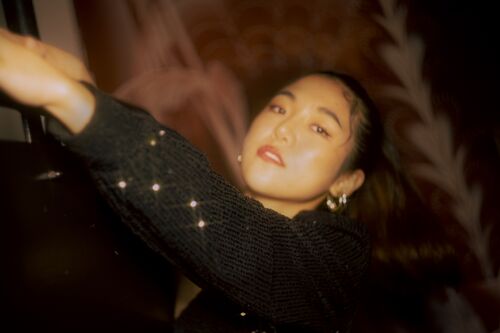
This image has the same imaged story as the last one, however there’s more movement. The model is noticing the camera, but it feels like she’s still not entirely making contact with the camera. She has a dreamy, disconnected look in her eyes.The focus is not entirely on her face, but a piece of arm just in front of it. This implies movement; as if she swung backward as the photographer was taking the photo. These photos, to me, are a perfect example of an “in the moment” photo, because it doesn’t feel like the model is specifically there to be photographed. The Photographer is documenting a moment. This is because the model has this disconnected look from the photographer. So while she is aware of him; it’s almost like her attention isn’t on specifically taking this photo.These images were greatly inspired by the style of the movie "In the Mood for Love" By Wong Kar wai. This film a particular colour range; a yellow-greenish, mostly warm toned aesthetic with a high contrast and yet a softness to it. I will also draw on the influence of asian analog photographers who use a similar aesthetic of this grainy, green toned, nostalgic aesthetic. With this style, I want these images to put the viewer in a particular nostalgic place.
The model has statuesque pose; like a doll. It might be, in this series of photos, taken before the other two pictures were taken. It looks a little bit more like she has just arrived, she looks a lot more proper and composed compared to the other pictures. And even though she isn't looking at the camera, it seems like she is a little more aware that she is being photographed. By the doll-like and statuesque pose, I would think that she is some sort of heiress living in the 50's or 40's, an example of a portrait I would compare it to is seen on the right. I wanted to use flash-like light, to make it look like a deliberate portrait, and not so much a cinematic still, as mentioned above.
These images were shot digitally and colour graded and lit to have an analogue and cinematic blend style. This promotes, to me, the best of both worlds; combining my digital shooting method with the style and nostalgia of an analog look. I want these photographs to have a feeling of being a quick snapshot while at the same time being a little too dreamy and stylised to create the feeling of it being a memory that is romanticised.
My parents are from Surinam and I would refer to myself as "a fake Asian" as I am mixed Chinese-Vietnamese-Whatever and did not grow up traditionally with Asian culture. So even though Anime is very much Japanese, because I wouldn't place myself in a certain country, I would try to have this connection with anything Asia-related. I feel like growing up I kind of became ashamed of my appearance and kind of got away from accepting myself; however as I turned 25 I felt like I want to embrace what, and who I am. And therefore I have also turned my interest into almost exclusively Asian photographers, from all of Asia. Because I don't see myself in any one of those cultures specifically, I like comparing styles from different countries. And it's something I would love to explore more.
the model
lighting
costume
imagined situation
Thi series shows fragments and details of a moment pieced together to create a larger story. These ‘collages’ are works that show how I remember moments; in small and intimate fragments that together create the whole memory. I wanted them to have an intense and intimate feeling to it by taking details and almost vague composition in order for the audience to have to guess what is happening. In a way inviting active thought and fantasy to the work. By also incorporating the darker/moodier style of the my previous style experiment; I wanted to create a bittersweet memory that is focussed on intimacy.
By using intimate and/or vague compositions, I tried to create a sense of wonder in the audience. Combining these in a couple of different ways, I wanted to see what the image would tell as a collage. By three out of four of the examples, I used myself or my boyfriend as a foundation in order to warm up to taking these intimate compositions and seeing if the work actually made the impact on me that I wanted. In the fourth image (in the supermarket) I used the Helios lens, that is only focussed manually, and shot my model in a way that conveyed movement and out of focus. A blurry memory.
This is the foundation on which I wanted to build my project, exploring more within the realm of intimacy starting with myself as a way of warming up to these intimate compositions. I thought a lot about wanting to convey intimacy and emotion in my work. My first thought on these themes was memories because I felt like having lived life, remembering and having experiences and looking back at them, reminiscing, can be a very intimate and emotional experience. However as I made the work I started to wonder if this is really the direction I wanted to go in.
My first qualm about this work was; while I like the style that I was drawing my inspiration from, I did not like that I shoved my work into a very depressing palette and aesthetic. While making the experiments about the memories I wondered if this represented me right now, or if it was an echo from the work and style that I started out with. I felt like keeping up with this style stunted my possible growth and development as a photographer.
My goal at first was to make memories that are universally relatable in an attempt to make anyone feel the emotions of that particular moment, however I felt like that foundation would be very removed from me as a person and what makes my work interesting is because it’s my work in particular. So how would I make my work more hyper personal? What makes my work MINE?
the model
lighting
costume
imagined situation
The colours give a whimsical view, casual and playful. It is a chore doing the washing but from the point of view of a child anything can be interesting. This is why Ghibli is a useful source.

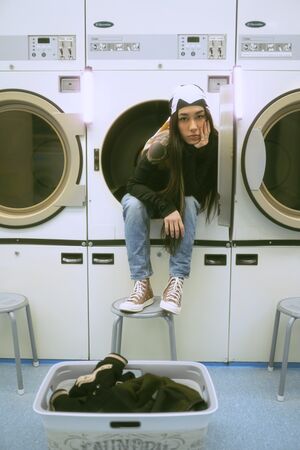
In the 2nd laundrette image the model is looking in the camera with an attitude; she's very present and she accepts the focus; she does not blend into the background and therefore the model is the most important thing in this picture. this is contrast to picture 1 where the model's presentation is more modest; more in the 'slice of life' there is more interaction with her surroundings; the pose is less to be seen and more natural. She is interested in something other than the viewer. The gaze is difference. The 'stage' is bigger, we can see more. This pose is more natural; in 2 she is sitting in a washing machine; why? In a fashion photo it seems natural but in a 'slice of life photo it wouldn't look like that is a natural position for her to just be in. In 2 she takes control of the photo, and in picture 1 it feels like OI am taking control of the photo and what is happening.
My inspiration for this photograph was the movie Minari.
The setting is a blue hour, but there’s a strip of light on the models face. It clearly cuts off at just bellow his shoulders; insinuating that it might be a flash light or a car headlight shining on him. Also because the light is very warm compared to his surroundings. This lighting to me, feels like it’s more cinematic. It’s telling us something about the narrative; it’s not just there to light the subject.
His pose is a little slouchy, which suggests that he is kind of done with his day. He is wearing a white collared shirt, but it’s not ironed and his buttons are open, his blazer has dropped to around his elbows; he is a white collar corporate man but does he want to be? His longer hair suggests a bit of rebellion and wanting to retain identity.
He is reacting to this light, but he doesn’t look like he was waiting for it. This suggests that this man might have wanted to have a solo, pensive walk in nature to clear his head, but someone has found him or is interrupting him. He doesn’t seem happy that he is not alone right now, he seems annoyed.
the model
lighting
costume
imagined situation
Komorebi: In real life, the space between the canopy and branches allows sunlight to gently filter through. In Japan, the dappled light this creates is called komorebi (pronounced koh-mo-reh-bee) and is made up of the kanji characters for tree (木), shine through (漏れ), and sun (日)
This is one of my latest experiments with the term "Komorebi" in mind.
the model
lighting
costume
imagined situation
extra
I'm trying to make a classic asian aesthetics; I only follow asian photography Korean, Japanese and Chinese aesthetic. I did not grow in this culture but want to connect with it. Perhaps this is common with 2nd and 3rd generation immigrants. I feel a real need to connect with these aesthetics and the culture.
I have always been moved by "slice of life" type images and artworks, there is something poetic [what does that term mean to you?]about a piece of artwork that shows you a normal everyday scenario that you are not a part of and can still give that feeling of having been there. It gives me a feeling of now-ness while never actually having experienced that particular moment. Examples of these kinds of moments in the movies Totoro and Kiki's Delivery Service below, in which an absolutely mundane moment is captured, however I am transported to relaxing, stress free summer days.
Another big reason I want to create this type of art is because slice of life Anime was a big part of my escapism sources in childhood. They were essentially a coping mechanism for my younger self to deal with an unstable environment by mentally transporting myself into different, more stress free and wholesome worlds.
Going back to this realisation and ultimately accepting it as my foundation for how I view art, has made me realise I want to go back to these inspirations and use my childhood motivations as the source for my work. Another big reason for choosing Ghibli as a foundation for my inspiration, is because it not only connects to my escapism, but because as an Asian woman growing up in the Netherlands I didn't have much media that I felt I could connect to.
I would like to experiment with the re-appropriation of cultural cliches and see someone wear a kimono, or African dress with pride in a Western country. I know people who are embarrassed to wear their traditional dress. So I would like to see this normalised. In the Netherlands I have seen a lot of Dutch people "dress up" as a person of color, which I think is very tasteless. I hate seeing the use of an Asian straw hat as a way to almost ridicule and stereotype one people. I want more of my work to also dabble in this re-appropriation.
However, that being said; I am not necessarily interested in creating work that is heavy with political messaging and I'm not interested it presenting it with those connotations. [S suggests<<Here you are defining yourself in NEGATIVE TERMS. Rather than ay what you DON'T want to do, describe what you DO want to do in positive terms.]
After coming to this realisation I also found my interest in the dark and moody aesthetic dwindle and finding a new interest in the lighter and cheerful color palette of Ghibli. A movie that is very in line with this slice of life, summer and stress free aesthetic was the movie "Sideways" by Alexander Payne, in which two friends travel to wine country to enjoy a relaxing and intellectually stimulating holiday.
I also became interested in Japanese analog photographers, who also use this lighter style and palette that studio Ghibli uses (Which may or may not be in correlation to one another). I found two photographers, Kuji Rena (2) and Iwakura Shiori (3), that embody this aesthetic in their work quite well.
The reason these works speak to me is not only the style which are aesthetically very much in line with the Ghibli style, but also because they have a quiet dignity to them. They are subtle and personal and are a perfect example of the romanticisation of the mundane. It's seeing the beauty in the little moments and enjoying them to the fullest. Celebrating what is most important in life: the joy of living, whenever and whatever we are doing.
And while celebrating the joy of living might be one of the most "Live, laugh, love" things to say; to me this new direction is a very personal one because anxiety, depression and darkness have been a big part of my life. And thus I am not surprised the dark and moody style was once my reality, because that is how I viewed the world. Now, with me healing mentally, I am able to appreciate and see the beauty of life and suddenly looking to experiencing it; and mindfulness is a big part of that.
And so: Slice of life, romanticising the mundane, appreciating the moment, being mindful is the direction I want to take my work in. Snapshots rather than film stills. The reason I am stepping off the "film still" concept is because I feel that forces my work in a more anti-personal direction, because it is a rule that the model would not be able to interact with the camera. Stepping off of calling my work film stills, will give me more freedom to experiment with and find value in my work without having to label it specifically.
My parents are from Surinam and I would refer to myself as "a fake Asian" as I am mixed Chinese-Vietnamese-Whatever and did not grow up traditionally with Asian culture. So even though Anime is very much Japanese, because I wouldn't place myself in a certain country, I would try to have this connection with anything Asia-related. I feel like growing up I kind of became ashamed of my appearance and kind of got away from accepting myself; however as I turned 25 I felt like I want to embrace what, and who I am. And therefore I have also turned my interest into almost exclusively Asian photographers, from all of Asia. Because I don't see myself in any one of those cultures specifically, I like comparing styles from different countries. And it's something I would love to explore more.
Another thing I would like to see more of, is the re-appropriation of cultural cliches and see someone wear a kimono, or African dress with pride in a Western country. I know people who are embarrassed to wear their traditional dress. So I would like to see this normalised. In the Netherlands I have seen a lot of Dutch people "dress up" as a person of color, which I think is very tasteless. I hate seeing the use of an Asian straw hat as a way to almost ridicule and stereotype one people. I want more of my work to also dabble in this re-appropriation.
In the previous work I did before joining PZ I’ve experimented a lot with creating cinematic scenes, almost like a screenshot out of a movie. These examples below were created with a scene in mind where the character in the story is either on their way somewhere or waiting for something. Back then I created the images with the ultimate goal of wanting to achieve this slice of life type of storytelling that is the goal of the thesis I am writing, however I felt that they lacked the narrative depth that I am currently in search of.


